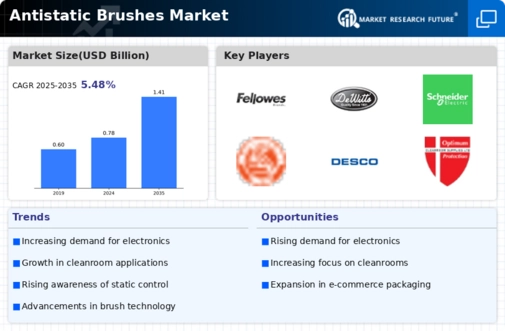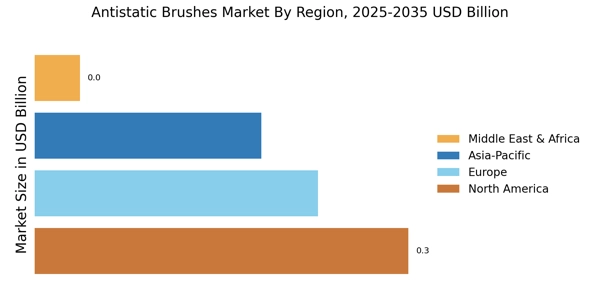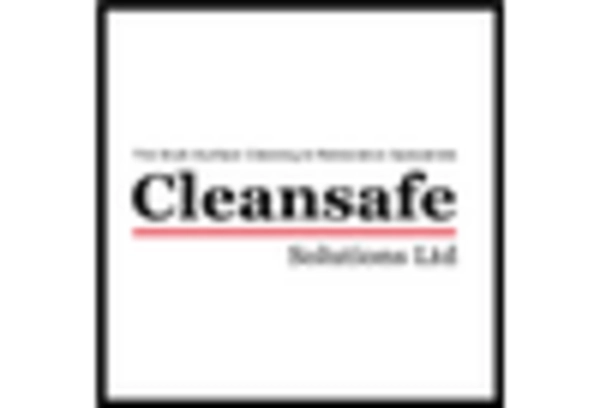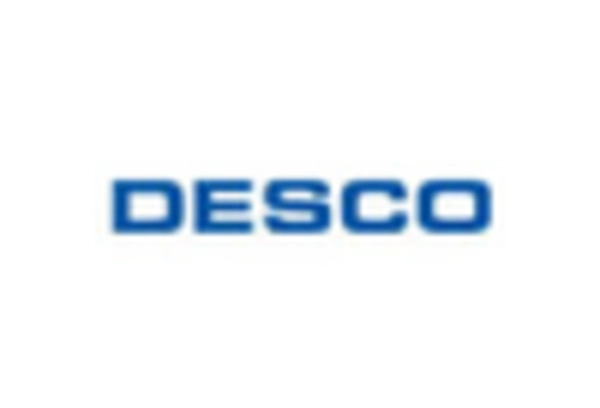Rising Awareness of ESD Risks
The increasing awareness of electrostatic discharge (ESD) risks among businesses is a crucial driver for the Antistatic Brushes Market. As organizations recognize the potential damage that static electricity can inflict on electronic components, there is a growing emphasis on implementing effective ESD control measures. In 2025, it is anticipated that educational initiatives and training programs will further enhance understanding of ESD risks, leading to a surge in demand for antistatic brushes. This heightened awareness is particularly relevant in industries such as telecommunications and automotive, where the integrity of electronic systems is paramount. Consequently, the market for antistatic brushes is likely to expand as companies invest in protective measures to safeguard their products and maintain operational efficiency.
Regulatory Compliance and Standards
The stringent regulatory compliance requirements across various industries are significantly influencing the Antistatic Brushes Market. Organizations are increasingly mandated to adhere to specific standards related to ESD control, particularly in sectors such as aerospace, healthcare, and telecommunications. Compliance with these regulations necessitates the use of antistatic brushes to ensure that products meet safety and quality benchmarks. In 2025, it is estimated that the market will see a notable increase in demand for antistatic brushes as companies strive to align with these regulations. This trend not only enhances product reliability but also fosters consumer trust, thereby propelling the growth of the antistatic brushes market. As industries continue to prioritize compliance, the relevance of antistatic brushes will likely remain robust.
Increasing Adoption of Antistatic Solutions
The rising awareness regarding the detrimental effects of static electricity on electronic components is driving the Antistatic Brushes Market. Industries such as electronics manufacturing, automotive, and pharmaceuticals are increasingly adopting antistatic solutions to mitigate risks associated with electrostatic discharge (ESD). In 2025, the market for antistatic brushes is projected to witness a growth rate of approximately 6% annually, reflecting the heightened focus on maintaining product integrity and quality. This trend is particularly evident in cleanroom environments, where the presence of static can lead to significant operational disruptions. As companies prioritize the protection of sensitive equipment, the demand for effective antistatic brushes is likely to surge, thereby enhancing the overall market landscape.
Technological Innovations in Antistatic Products
Technological innovations in the development of antistatic products are reshaping the Antistatic Brushes Market. Manufacturers are increasingly investing in research and development to create brushes that offer enhanced performance, durability, and efficiency. Innovations such as the incorporation of advanced materials and ergonomic designs are expected to attract a broader customer base. In 2025, the market is projected to benefit from these advancements, as users seek products that not only meet their functional requirements but also improve user experience. The introduction of smart antistatic brushes equipped with sensors and connectivity features may further revolutionize the market, providing users with real-time data on ESD levels. This evolution in product offerings is likely to stimulate demand and foster competitive dynamics within the industry.
Expansion of the Electronics Manufacturing Sector
The continuous expansion of the electronics manufacturing sector is a pivotal driver for the Antistatic Brushes Market. With the proliferation of consumer electronics, including smartphones, laptops, and wearable devices, the need for effective ESD control measures has become paramount. In 2025, the electronics sector is expected to account for a substantial share of the antistatic brushes market, as manufacturers seek to prevent damage to sensitive components during production and assembly processes. The integration of advanced technologies in electronics, such as miniaturization and increased circuit density, further amplifies the necessity for antistatic solutions. Consequently, the demand for specialized antistatic brushes tailored for various applications within the electronics industry is anticipated to grow, driving market dynamics.


















Leave a Comment